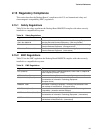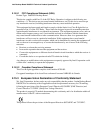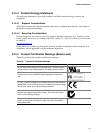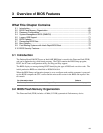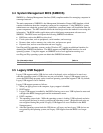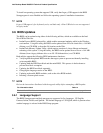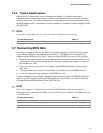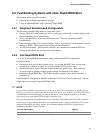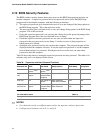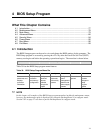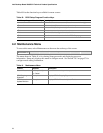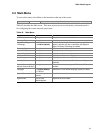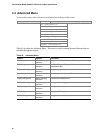
Overview of BIOS Features
73
3.6.2 Custom Splash Screen
During POST, an Intel
®
splash screen is displayed by default. This splash screen can be
augmented with a custom splash screen. A utility is available from Intel to assist with creating a
custom splash screen. The custom splash screen can be programmed into the flash memory using
the BIOS upgrade utility. Information about this capability is available on the Intel Support World
Wide Web site.
✏
NOTE
If you add a custom splash screen, it will share space with the Intel branded logo.
For information about Refer to
The Intel World Wide Web site Section 1.2, page 15
3.7 Recovering BIOS Data
Some types of failure can destroy the BIOS. For example, the data can be lost if a power outage
occurs while the BIOS is being updated in flash memory. The BIOS can be recovered from a
diskette using the BIOS recovery mode. When recovering the BIOS, be aware of the following:
• Because of the small amount of code available in the non-erasable boot block area, there is no
video support. You can only monitor this procedure by listening to the speaker or looking at
the diskette drive LED.
• The recovery process may take several minutes; larger BIOS flash memory devices require
more time.
• Two beeps and the end of activity in the diskette drive indicate successful BIOS recovery.
• A series of continuous beeps indicates a failed BIOS recovery.
To create a BIOS recovery diskette, a bootable diskette must be created and the BIOS update files
copied to it. BIOS upgrades and the Intel Flash Memory Update Utility are available from Intel
Customer Support through the Intel World Wide Web site.
✏
NOTE
Even if the computer is configured to boot from an LS-120 diskette (in the Setup program’s
Removable Devices submenu), the BIOS recovery diskette must be a standard 1.44 MB diskette not
a 120 MB diskette.
For information about Refer to
The BIOS recovery mode jumper settings Section 2.9.2, page 57
The Boot menu in the BIOS Setup program Section 4.7, page 96
Contacting Intel customer support Section 1.2, page 15



